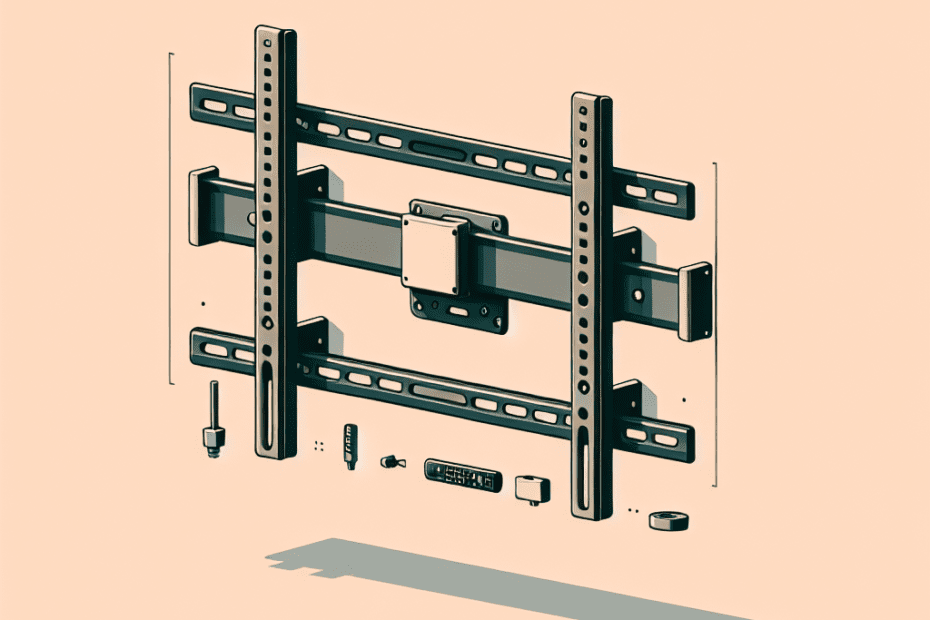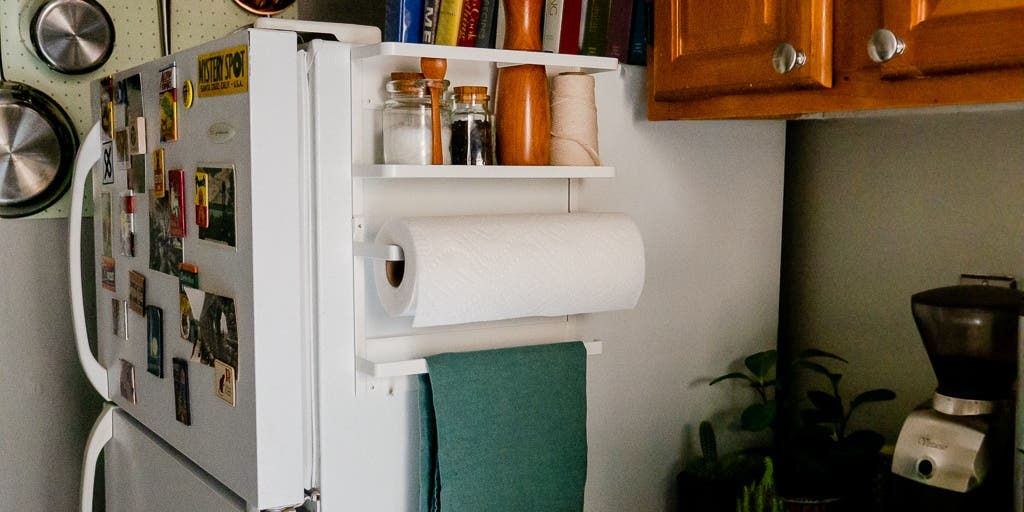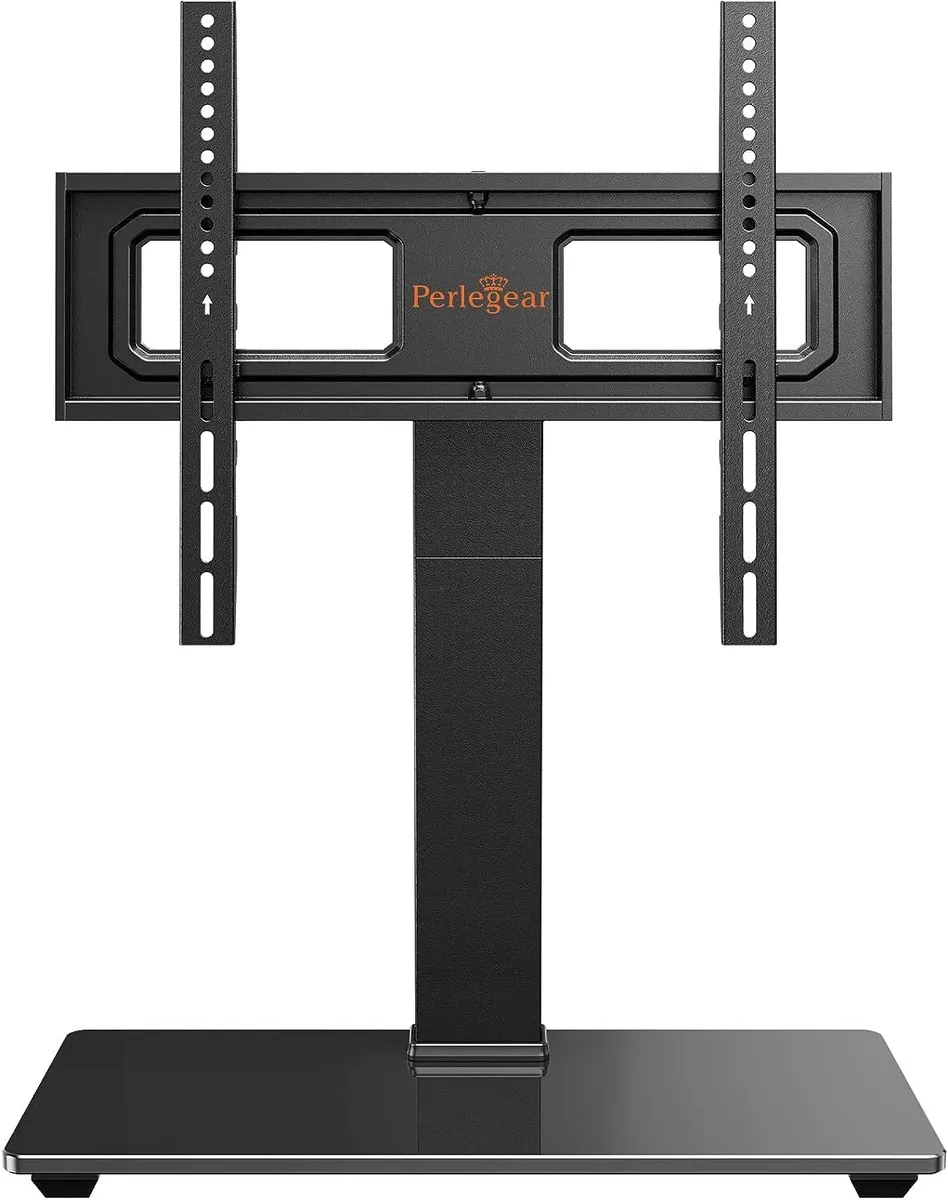TV Mounting: Enhancing Your Viewing Experience
Mounting your TV on the wall can significantly enhance your viewing experience, providing a sleek and modern look to your living room or entertainment area. There are several benefits to wall-mounting your TV, as well as different types of TV mounts available.
Benefits of Wall-Mounting Your TV
One of the key benefits of wall-mounting your TV is the space-saving advantage it offers. By mounting your TV on the wall, you free up valuable floor space and create a more streamlined and organized look in your room. This is especially beneficial for smaller spaces or rooms with limited floor area. Additionally, wall-mounting your TV can help protect it from accidental bumps or falls, as the TV will be securely attached to the wall and out of reach of children or pets.
Another advantage of wall-mounting is the ability to optimize your viewing angles. With a wall-mounted TV, you have the flexibility to adjust the position and angle of the TV to achieve the best viewing experience. This can help reduce glare and provide a more immersive and comfortable viewing experience for you and your family (Angi).
Different Types of TV Mounts
When it comes to choosing the right TV mount, there are several options available that cater to different needs and preferences. Here are the main types of TV mounts:
Fixed TV Mounts
Fixed TV mounts are the simplest and most affordable option. These mounts hold the TV close to the wall, providing a flush and low-profile look. While fixed mounts do not offer any movement or adjustability, they are ideal for situations where you want to maintain a fixed viewing angle and do not require the ability to tilt or swivel the TV.
Tilt TV Mounts
Tilt TV mounts allow you to adjust the vertical angle of the TV. This feature is particularly useful when mounting the TV at a higher position, such as above a fireplace. By tilting the TV downward, you can achieve a more comfortable viewing angle and reduce neck strain. Tilt mounts are also beneficial for minimizing glare from windows or bright lights in the room.
Full-Motion TV Mounts
Full-motion TV mounts, also known as articulating or swivel mounts, offer the most flexibility and adjustability. These mounts allow you to extend, tilt, swivel, and rotate the TV in multiple directions. With a full-motion mount, you can easily adjust the TV to achieve the perfect viewing angle from any location in the room. This is particularly useful in larger rooms or when you want to watch TV from different seating areas.
To ensure a safe and enjoyable TV viewing experience, it’s crucial to select a TV mount that is appropriate for your TV’s weight and size. Consider consulting the TV’s manual or contacting the manufacturer to determine its weight and VESA mounting pattern. The VESA (Video Electronics Standards Association) mounting standard specifies the distance between the mounting holes on the back of the TV. This information is essential for selecting a compatible TV mount (Angi).
Remember, the installation process of a TV mount is equally important. You should locate the studs in the wall for secure mounting, follow the manufacturer’s instructions carefully, and consider professional installation if you are unsure about the process or lack the necessary tools and expertise.
By choosing the right TV mount and ensuring its proper installation, you can enhance your viewing experience, save space, and achieve a clean and modern aesthetic in your home.
Choosing the Right TV Mount
When it comes to mounting your TV, choosing the right TV mount is essential to ensure a secure installation and an optimal viewing experience. There are several factors to consider when selecting a TV mount, including the weight and size of your TV, understanding the VESA mounting standard, and other important factors.
Considering TV Weight and Size
One of the first considerations when choosing a TV mount is the weight and size of your TV. It is important to select a TV mount that can properly support the weight and dimensions of your TV. Each TV mount comes with weight limits, so it’s crucial to choose one that can handle the weight of your TV (Angi). The weight capacity of a TV mount should be greater than the weight of your TV to ensure a secure and stable installation (Consumer Reports).
Additionally, you should consider the size of your TV when selecting a TV mount. TV mounts are designed to accommodate specific TV sizes. It is important to choose a TV mount that is compatible with the size of your TV to ensure a proper fit.
To assist you in selecting the appropriate TV mount for your TV, refer to the manufacturer’s specifications or consult the TV mount’s weight and size limitations. This information will help you find a TV mount that is suitable for your specific TV model.
Understanding VESA Mounting Standard
The VESA (Video Electronics Standards Association) mounting standard is an important consideration when choosing a TV mount. The VESA pattern refers to the hole pattern on the back of the TV that is used for attaching the TV mount. It is crucial to choose a TV mount that matches the VESA pattern of your TV for proper mounting (CableTV.com).
To determine the VESA pattern of your TV, you can refer to the TV’s user manual or look for the information on the manufacturer’s website. The VESA pattern is typically represented by a number such as 200×200 or 400×400, which refers to the distance in millimeters between the mounting holes on the back of the TV (Consumer Reports).
When selecting a TV mount, ensure that it is compatible with the VESA pattern of your TV to ensure a secure and proper fit. This will help you avoid any compatibility issues during installation.
Factors to Consider When Selecting a TV Mount
In addition to TV weight, size, and VESA compatibility, there are other important factors to consider when selecting a TV mount. These factors include:
-
Mounting Location: Consider the location where you plan to install the TV mount. Whether it’s on a wall, in a corner, or on a ceiling, there are specific TV mounts designed for different mounting locations. Choosing the right TV mount for your intended location is essential for a secure and functional installation.
-
Adjustability: Determine whether you need a fixed TV mount, a tilt TV mount, or a full-motion TV mount based on your viewing preferences. A fixed TV mount holds the TV in a stationary position, while a tilt TV mount allows you to adjust the vertical viewing angle. Full-motion TV mounts offer the most flexibility, allowing you to tilt, swivel, and extend the TV in various directions.
-
Installation Difficulty: Consider whether you prefer a professional installation or if you are comfortable with a DIY installation. Some TV mounts may require more complex installation procedures, while others are designed for easy and straightforward installation. Assess your level of expertise and choose a TV mount that suits your comfort level.
By carefully considering the weight and size of your TV, understanding the VESA mounting standard, and evaluating other important factors, you can choose the right TV mount for your specific needs. Remember to consult the manufacturer’s instructions and guidelines for proper installation to ensure a safe and secure mounting of your TV.
Types of TV Mounts
When it comes to selecting the right TV mount for your home, there are different options to consider. Each type of TV mount offers unique features and benefits. Let’s explore three popular options: fixed TV mounts, tilt TV mounts, and full-motion TV mounts.
Fixed TV Mounts
Fixed TV mounts are the simplest and easiest to install option. They securely attach your TV to the wall, keeping it in a fixed position. This type of mount does not allow for screen movement or angle adjustments. Fixed TV mounts are ideal for situations where you want a sleek, low-profile look or have limited space available. They keep the TV close to the wall, providing a clean and minimalist appearance.
Tilt TV Mounts
Tilt TV mounts offer the ability to adjust the vertical angle of your TV. You can tilt the screen downwards or upwards to achieve the desired viewing angle. This is particularly useful when you need to mount the TV at a higher position, such as above a fireplace. Tilt TV mounts allow you to reduce glare and optimize the viewing experience by adjusting the screen tilt to match your eye level.
Full-Motion TV Mounts
Full-motion TV mounts, also known as articulating or swivel mounts, provide the greatest flexibility in adjusting the viewing angle. These mounts allow for both vertical and horizontal adjustments, giving you the ability to tilt, swivel, and extend the TV away from the wall. With full-motion mounts, you can achieve optimal viewing angles from different seating positions in the room. Additionally, some full-motion mounts can be folded to make the TV look flat against the wall when not in use.
Full-motion TV mounts are particularly suitable for larger TVs or if you have multiple seating areas in your living room or entertainment space. They offer wide viewing angles, making it easier to find the perfect position for everyone in the room to enjoy the best possible view of the screen.
When selecting a TV mount, consider the size and weight of your TV, as well as the viewing preferences and layout of your room. Fixed TV mounts are suitable for smaller TVs and when you want a sleek, low-profile look. Tilt TV mounts are ideal for situations where you need to adjust the viewing angle vertically. Full-motion TV mounts provide the most flexibility in adjusting the viewing angle and are suitable for larger TVs or rooms with multiple seating areas.
Remember to consult the manufacturer’s instructions and guidelines for proper installation and weight capacity of the TV mount. If you’re unsure about the installation process or want to ensure a secure mounting, professional installation services are also available.
By understanding the different types of TV mounts and their functions, you can choose the one that best suits your needs, enhances your viewing experience, and complements the layout of your home.
Installing a TV Mount
Once you have selected the right TV mount for your needs, it’s time to install it securely on your wall. Proper installation is crucial to ensure the safety and stability of your TV. In this section, we will discuss the steps involved in installing a TV mount, including locating studs, following manufacturer’s instructions, and the choice between professional installation and DIY.
Locating Studs for Secure Mounting
Before installing a TV mount, it’s important to locate the studs in your wall. Studs provide the necessary support and stability for securely mounting the TV. You can use a stud finder, which is a useful tool for detecting studs behind the wall’s surface (Tom’s Guide). Once you have identified the studs, mark their locations on the wall to guide the installation process.
If you cannot find a stud directly behind the desired location for your TV mount, you can use drywall anchors to provide additional support (CableTV.com). However, it’s important to note that drywall anchors may not offer the same level of stability as mounting directly into the studs. Consider the weight and size of your TV when deciding whether to rely solely on drywall anchors.
Following Manufacturer’s Instructions
To ensure a successful TV wall mount installation, it is crucial to follow the manufacturer’s instructions. Each TV mount may have specific requirements and guidelines for installation. These instructions typically outline the necessary tools, hardware, and step-by-step procedures for mounting the TV securely. It’s important to carefully read and understand these instructions before starting the installation process.
By following the manufacturer’s instructions, you can ensure that the TV mount is installed correctly and minimize the risk of damage to your TV or wall. Additionally, using the recommended tools and hardware specified in the instructions will help ensure the stability and safety of the mounted TV.
Professional Installation Vs. DIY
When it comes to installing a TV mount, you have the option to either do it yourself (DIY) or hire a professional. The choice between the two depends on several factors, including your level of experience, the complexity of the installation, and the size and weight of the TV.
For smaller and lighter TVs, a DIY installation may be feasible if you are comfortable with basic hand tools and following instructions. However, it’s important to note that larger and heavier TVs may require more expertise and knowledge to ensure proper mounting and safety. In such cases, professional installation is highly recommended to minimize the risk of accidents and damage.
Professional installers have the necessary experience and expertise to handle the complexities of mounting larger TVs. They can ensure that the TV is securely mounted, taking into account factors such as the wall structure, weight distribution, and the use of appropriate mounting hardware (NBC San Diego). Additionally, professional installation often includes services such as concealing cables and optimizing the viewing angle for an enhanced home theater experience.
Regardless of whether you choose professional installation or DIY, it’s important to prioritize safety and follow the necessary precautions to avoid accidents and damage. By ensuring a secure and proper TV mount installation, you can enjoy your favorite shows and movies with peace of mind.
In the next section, we will explore important considerations for ensuring safety and achieving optimal viewing angles when using a TV mount.
Ensuring Safety and Optimal Viewing
When it comes to mounting your TV, safety and optimal viewing are two key factors to consider. By taking the necessary precautions and selecting the right TV mount, you can prevent accidents and create an enjoyable viewing experience for everyone in the household.
Preventing Tip-Over Accidents
Tip-over accidents involving televisions can pose a serious risk, especially in households with young children. According to the Consumer Product Safety Commission, there were an estimated 14,700 emergency room visits in 2019 related to tip-over incidents involving televisions, furniture, and appliances. To prevent such accidents, it is essential to secure your TV with the appropriate mounting hardware and wall anchors. This ensures that the TV remains stable and cannot be easily tipped over. When installing your TV mount, follow the manufacturer’s instructions and use wall anchors that are suitable for your wall type.
Mounting Height and Viewing Angles
To optimize your viewing experience, it’s important to consider the mounting height and viewing angles of your TV. The ideal height at which you should mount your TV depends on the size of the screen and the angle from which you’ll be viewing it. Generally, it is recommended to mount the TV at eye level when sitting in your normal viewing position. This ensures comfortable viewing without straining your neck or eyes.
Consider the room layout and seating arrangement when determining the best viewing angle. If your TV mount allows for tilt or swivel adjustments, you can fine-tune the angle to reduce glare and achieve the best possible picture quality. By mounting your TV at the right height and adjusting the viewing angles, you can create a more immersive and enjoyable viewing experience for everyone.
Factors to Consider for a Safe and Enjoyable TV Viewing Experience
In addition to tip-over prevention and optimal viewing angles, there are a few more factors to consider for a safe and enjoyable TV viewing experience. These include:
- Cable Management: Properly organize and conceal your cables to keep them out of sight and prevent tripping hazards. Use cable management solutions, such as cable clips or raceways, to route and secure cables neatly along the wall.
- Room Lighting: Take into account the lighting conditions in the room where your TV is mounted. Avoid placing the TV in direct sunlight or in a location with excessive glare. Use curtains, blinds, or adjustable lighting to minimize reflections and improve the overall viewing experience.
- Sound Quality: Consider the sound quality when mounting your TV. If you’re using external speakers or a soundbar, ensure that they are compatible with your TV mount and properly positioned for optimal audio performance.
- Future Accessibility: If you anticipate the need to access the back of your TV for maintenance or cable adjustments in the future, choose a TV mount that allows for easy removal and reinstallation of the TV.
By keeping these factors in mind and selecting the right TV mount, you can create a safe and enjoyable TV viewing experience for yourself and your family. Remember to follow the manufacturer’s instructions and seek professional installation assistance if needed. Enjoy your favorite shows and movies with peace of mind, knowing that your TV is securely mounted and optimized for the best viewing experience possible.
- Unleash the Potential: Exploring the World of Ceiling TV Mounts - February 15, 2024
- How to Mount a Tv on a Swivel Stand - February 15, 2024
- How to Hang Tv Outside - February 14, 2024


